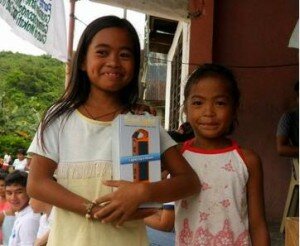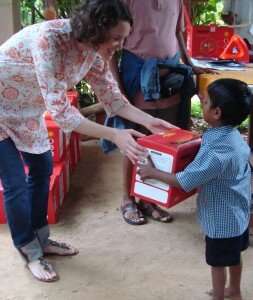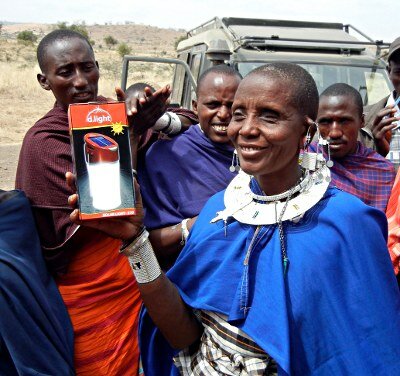“Sister Karishma, I want to be a teacher one day!” “Sister Karishma, watch me read at dusk using the solar lamp you provided to our school?” That’s what I heard while interacting with primary grade students at the Haveli School in the village of Tasing in the Alwar province near the Aravilli mountains and Sariska tiger reserve in the desert state of Rajasthan, India. This is the school that my great grandfather established by donating his centuries old ancestral home, haveli, to the village he grew up in to educate girls who are typically not afforded an opportunity for education. I had just presented a lesson plan I developed to teach students about the benefits of solar technology, and the importance of harnessing the power of the sun’s rays so they can study effectively at night since they have no access to electricity in their rural, underdeveloped village. Most of the girls I spoke with told me they wanted to become teachers to educate other students in the village, as they realize how important it is for everyone to receive an opportunity for education. Upon hearing from these students who were eager to learn and incorporate the new sustainable technology I had introduced in their lives because it provides hope and enables them to become more productive, I learned how important my project and research is for students at the Haveli School, their rural community in the developing world, and the rest of us who grapple with solutions to societal inequities that are our responsibility to address.
American philosopher, John Dewey understood that “Education is not just preparation for life…it is life itself!” My entire journey this past summer has been an exciting learning experience from living without electricity and running water in rural villages in Rajasthan, India, to learning how to communicate with people who look like me, but do not speak my language. I became an OML Ambassador when I was a rising sophomore in high school because I truly wanted to make a difference in educating and empowering underprivileged students who were confined by rural impediments such as lack of electricity by donating solar lamps and introducing village school students to the benefits of sustainable technology. As a rising sophomore in the Sanford School of Public Policy’s Hart Leadership SOL Program at Duke University, I wanted to know whether solar lamps are an effective technology to implement in rural villages to help students study productively at night when there is little or no access to electricity. Three years after initially distributing 150 solar lamps to students at the Haveli School in Tasing, Rajasthan, India, I returned to help the community where my ancestors once lived by conducting a project evaluation to determine whether students had incorporated use of this simple, easy to use sustainable technology. I also wanted to know how students utilized the solar lamps, and whether the introduction of this technology helped them study more effectively.
The students, teachers, administrators, parents and community leaders were extremely welcoming and willing to participate in my interviews and focus groups during and after school. While three classes of students had graduated since my first distribution, I was pleasantly pleased to see so many of the original lamps still present and working. I donated 50 additional solar lamps this past summer and established a library check-out system so that students would have the opportunity to take the lamps home in the evening after charging during the day at school. A library system teaches students the responsibility of charging the lamp during the day, and provides an equitable distribution model so that every student can benefit from use of a solar lamp after school. Establishing this system and ensuring it was being followed properly, was challenging at first. Most students with siblings at the school took one lamp home to share. With the supervision of one teacher/administrator, we ensured the students knew it was their shared responsibility to charge the solar lamps in the school’s courtyard each morning after their pledge to the flag.
The most rewarding experience was my daily interaction of speaking with students from each grade level and hearing how they and their parents have incorporated and embraced the new technology that I introduced to them three years ago. The students shared how they are responsible for chores to help their families survive, which does not leave too much time to study at night. They complained about teachers assigning too much homework which is difficult to complete when there is no light. Interestingly, most students no longer used kerosene oil lamps if their family received a solar lamp from my initial distribution. When I reviewed the dangers of kerosene oil lamps to their health and our environment, several students informed me that their mothers placed the solar lamps in the home’s kitchen in order to see better while preparing dinner instead of resorting to commonly available kerosene oil lamps.
When I asked students to tell me what they know about solar technology and alternative energy, they were quiet and shy to answer, and did not truly understand why renewable energy sources should be used. This provided the basis for another large component of my research, as I discovered students in rural communities are unaware of global environmental problems and how alternative energy can help our planet. I worked with the Science teacher and headmaster of the Haveli School to develop a lesson plan in Hindi and English to teach students about the detrimental effects of climate change and the importance of using alternative energy resources. I provided students with questionnaires before and after the lesson was presented to assess their understanding of the material. The responses indicate that students understood the beneficial impact of utilizing solar energy, and welcomed the introduction of this new technology in their community.
The last component of my project was visiting to students’ homes and conducting interviews with parents after a presentation of the solar energy lesson plan to the entire school community. I noticed the stark differences between their households and what we take for granted. It was truly a humbling experience to see that despite the cultural differences, we really are all connected by common virtues and values. Parents were very receptive to my initiative to educate students on the benefits of alternative energy and how they can make a difference in our environment. They were extremely appreciative that I was helping their child further their education, and were also interested in learning about the benefits of solar technology. I believe both the students and I learned so much from one other about the importance of education and how we can work together as a global community to spread awareness of the detrimental effects of climate change, and provide solutions to help alleviate these problems around the world.

 After a week-long distribution of 180 solar lights, Light Ambassador Sierra Fan reflects on her experience in the Philippines.
After a week-long distribution of 180 solar lights, Light Ambassador Sierra Fan reflects on her experience in the Philippines.
 The absolute joy in the face of a child who has just received his very own solar light… so that he can read at night… is 100% worth every penny.
The absolute joy in the face of a child who has just received his very own solar light… so that he can read at night… is 100% worth every penny.
 Ambassador Jessica Matthys: The solar lanterns will make a significant impact on these women‘s lives.
Ambassador Jessica Matthys: The solar lanterns will make a significant impact on these women‘s lives.